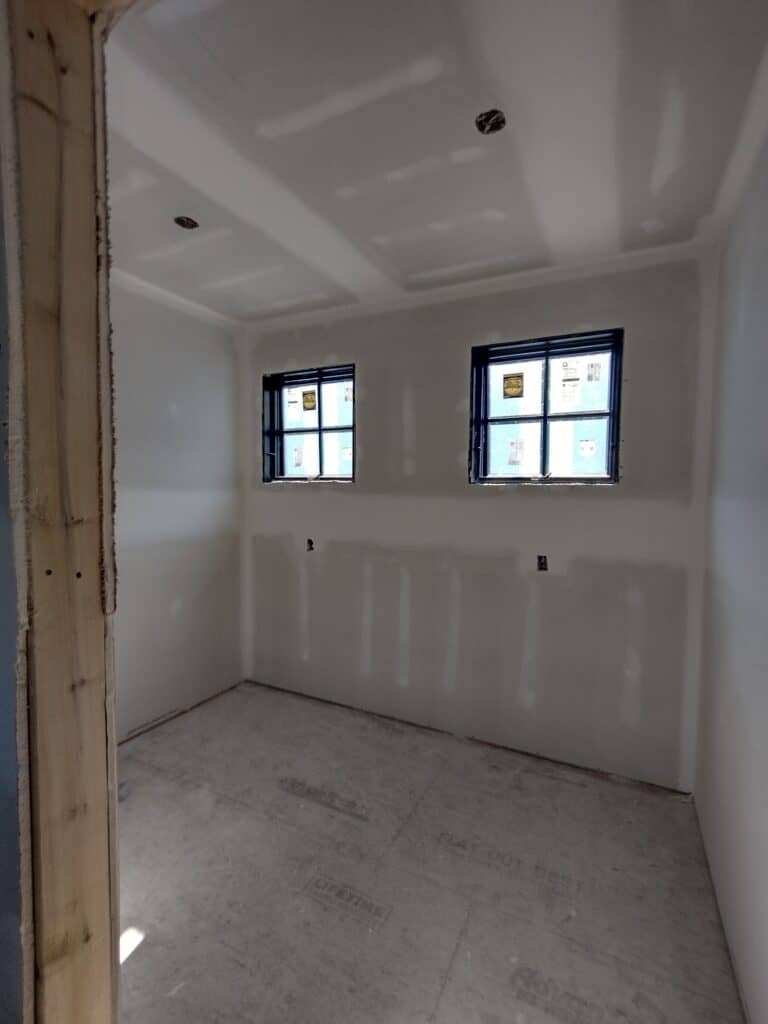When it comes to interior wall construction, two terms that you may hear used interchangeably are “sheetrock” and “drywall.” While they share many similarities, they are not entirely synonymous. In this post, we’ll delve into the differences between sheetrock and drywall, exploring their practical applications, cost disparities, and nuances in repairs and priming for paint.
Understanding the Basics
What is Drywall?
Drywall is a generic term that refers to a panel made of gypsum plaster pressed between two thick sheets of paper. It is widely used in construction for creating interior walls and ceilings. The gypsum core provides fire resistance, and the paper surfaces allow for easy finishing.
What is Sheetrock?
Sheetrock is a brand name for drywall manufactured by the company USG Corporation. Over time, the term “sheetrock” has become colloquially synonymous with drywall. It’s essential to recognize that while all sheetrock is drywall, not all drywall is sheetrock.
Practical Applications
Sheetrock Applications:
Sheetrock, being a specific brand of drywall, is suitable for a wide range of applications, from residential to commercial construction. It is often the material of choice for contractors and builders due to its consistent quality and performance. Sheetrock is available in various thicknesses and sizes to accommodate different project requirements.
Drywall Applications:
Drywall, as a generic term, encompasses a broader range of products beyond just sheetrock. Other drywall manufacturers produce similar panels with gypsum cores encased in paper. The applications of generic drywall are virtually identical to sheetrock, making it a versatile and widely used material in the construction industry.
Cost Differences
Sheetrock Costs:
Sheetrock, being a well-known and established brand, can be slightly more expensive than generic drywall. The pricing may vary depending on the specific product line, thickness, and size. Contractors and builders often weigh the brand’s reputation, consistency, and product availability against the potential cost savings of generic drywall.
Drywall Costs:
Generic drywall, available from various manufacturers, tends to be more cost-effective compared to sheetrock. While it offers similar performance and quality, the reduced brand recognition can result in lower prices. However, it’s crucial to consider the specific project requirements, as some applications may necessitate the use of a particular brand or type of drywall.
Repairs
Sheetrock Repairs:
Repairing sheetrock involves addressing issues such as holes, cracks, or dents in the panels. For small holes, a common DIY approach is to use joint compound or spackle to fill and smooth the damaged area. Larger holes may require the use of a sheetrock patch or replacement of the entire panel, depending on the extent of the damage.
Drywall Repairs:
Repairs for generic drywall are akin to those for sheetrock. Small holes or cracks can be patched using joint compound or drywall repair kits available at hardware stores. For more extensive damage, cutting out the damaged portion and replacing it with a new piece of drywall is a common practice. The key to successful repairs is ensuring that the patched area is seamlessly integrated into the existing surface.
Priming for Paint
Sheetrock Priming:
Before painting sheetrock, it is essential to apply a primer to create a smooth and uniform surface. Pores in the paper surface of sheetrock can absorb paint differently, leading to uneven color and texture. A high-quality primer helps seal the surface and provides an optimal base for paint adhesion. Once primed, sheetrock is ready for the application of the desired paint finish.
Drywall Priming:
The priming process for generic drywall mirrors that of sheetrock. Applying a primer before painting is crucial for achieving a professional and long-lasting finish. Choose a primer that is suitable for drywall surfaces and allows the paint to adhere uniformly. This step is particularly important when dealing with newly installed drywall or repaired areas to ensure consistent paint coverage.
In summary, while sheetrock and drywall are often used interchangeably, sheetrock refers specifically to a brand of drywall produced by USG Corporation. Both sheetrock and generic drywall share the same fundamental composition of a gypsum core encased in paper and serve as essential materials in construction for creating interior walls and ceilings.
The choice between sheetrock and generic drywall depends on various factors, including project requirements, budget considerations, and personal preferences. Contractors and builders may opt for sheetrock due to its reputation for consistent quality, while others may choose generic drywall for its cost-effectiveness without compromising performance.
When it comes to repairs, both sheetrock and generic drywall follow similar processes, involving patching and smoothing damaged areas. Additionally, priming before painting is a crucial step for achieving a professional finish, regardless of whether you’re working with sheetrock or generic drywall.
Ultimately, whether you call it sheetrock or drywall, understanding the differences and similarities between these materials empowers builders, contractors, and DIY enthusiasts to make informed decisions, ensuring the success and longevity of their construction projects.

